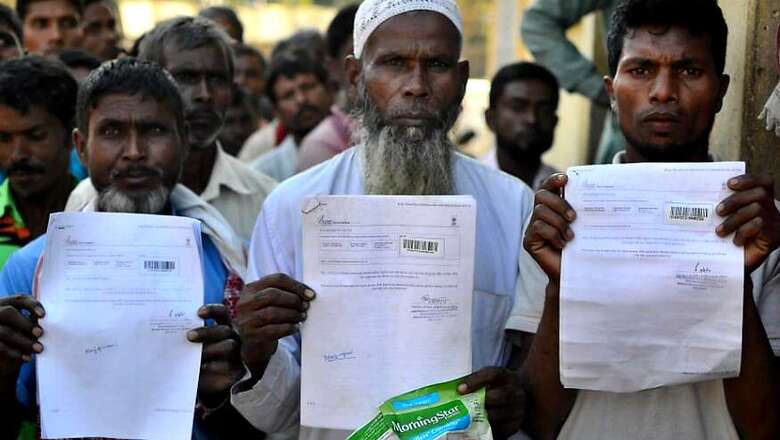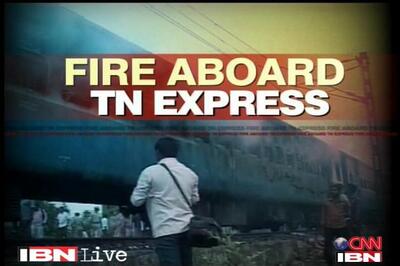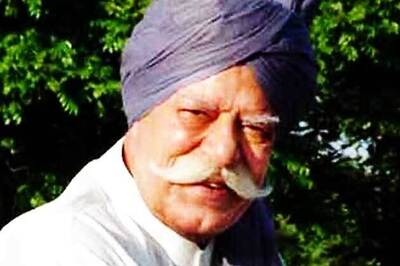OPINION | NRC Update in Assam a Boon for Bona Fide Citizens, May Help Uphold State's Social Dynamics

views
Assam has a rich cultural and traditional history that has appealed to all segments of society. Along with its abundant flora and fauna, it has managed to walk hand-in-hand with modernisation and economic liberalisation. Though the state has witnessed some major changes, its people have ensured to uphold its historical significance to this day.
The state was severely greatly affected after the India-Pakistan War of 1971 that resulted in the liberation of East Pakistan and formation of Bangladesh. The difficulty of setting up check-posts and erecting fences across the entire stretch of the 262-km-ling border that the northeastern state shares with Bangladesh has led to massive illegal migration that continues to this day.
Due to weak efforts of the West Bengal and Assam governments, the illegal migrants managed to make their way to the entire nation. Of the 2.60 crore residents of Assam, an estimated 60 lakh are said to be illegal Bangladeshi migrants, though no official data has exact details of this.
A state is made by its people and it is they who helm its machinery. But, if the machinery is being infiltrated by illegal foreign elements, such machinery slows down and withers away with time.
The issue of illegal migration should always be dealt with stringently as it slowly eats into the resources of that particular state if left unattended. The rapid influx of the migrants has resonated across political, social, economic and security arenas and further complicated lives of the original residents of Assam.
Local politicians protect them as it helps them as a vote-bank. These migrants further impact the lives of locals by staking claim in jobs and businesses. They even enroll themselves for benefits under the National Rural Employment Guarantee Scheme (NREGS) and National Rural Health Mission (NRHM).
Also, as Bangladesh is a Muslim-majority nation, Assamese fear the high rate of influx may completely change the state’s social dynamics. Various agitations and strikes have been led by youth and student organisations against these issues, though nothing much changed on the ground.
However, the major concern is that of national security. It is a known fact that extremist groups like United Liberation Front of Asom (ULFA), National Democratic Front of Bodoland (NDFB) and Harkat-ul-Jihadi-e-Islami had camped in Bangladesh and executed several attacks on the state in the past.
With all these problems, it was necessary to uproot the illegal migrants with the help of a stringent law and this led to the enactment of the Illegal Migrants (Determination by Tribunals) Act, 1983.
It was created specifically for the protection of Indian citizens from illegal migrants. According to Section 3(c) of the Act, the word “illegal migrant” means a person who has entered the territory of India on or after 25th March, 1971, is a foreigner and has entered without the valid documents and legal authority.
However, the Act failed to curb the problem and consequently, in the Sarbananda Sonowal v. Union of India & Anr., [(2005) 5 SCC 665], a three-judge bench of the Supreme Court observed that “the IMDT Act created the biggest hurdle and is the main impediment or barrier in identification and deportation of illegal migration and was held as unconstitutional”.
The National Register of Citizen (NRC) as a document of Indian citizenship was prepared for first time in 1951 when Assam had approximately 80 lakhs citizens. Rising number of illegal migrants created a plethora of problems and to tackle this, updating the NRC was considered necessary.
Since 2005, the issue of updating the register was being floated but continued to get delayed for one or the other reason. After a writ petition was filed by the Assam Public Works, the Supreme Court got involved in 2009 and in March 2013, the court directed the Centre to finalise the process. Duly filled-in forms were submitted by applicants and their verification process started on September 1, 2015.
The draft NRC was published on July 30, 2018, which included names of about 2.9 crore people out of the 3.2 crore applicants. The final list will be published on August 31 after all objections and claims of excluded applicants are resolved.
The benefits of NRC are many — from enjoying all constitutional and statutory rights to protection and safeguard from any kind of harassment prohibited by any Indian law. Those excluded from the register will be either jailed or deported. Hence, an updated NRC is a boon for all those bona fide Indian citizens who have suffered due to illegal migration.
However, the migrants left no opportunity to disrupt and delay the smooth updating process as highlighted by the All Assam Students’ Union (AASU). They resorted to submission of various forged documents to get their names included in NRC, though the government has tried to ensure a strict review of such documents.
Various organisations in the state also took it upon themselves to deal with the issue and help in the NRC updating process that is hoped to solve the citizenship issue and prevent an imminent religious war.
(The author is Supreme Court lawyer. Views expressed are personal)


















Comments
0 comment